
Once you begin to investigate chicken keeping, you will quickly discover many breeds to choose from. When we first started out, we had no idea that so many types of chickens existed!
Frankly, it can be a little overwhelming, and if you are like most kids, you will want to meet and keep every single chicken breed. Certain breeds, however, do work better in certain situations.
What should you consider when beginning to select your flock? Most people use these criteria when picking out their breeds:
Some people want to raise their own chickens to serve at the family table, and some breeds are better suited for that purpose than others. This book is more about chickens who are going to be family pets, not Sunday supper.

Where you live plays an important role in which breeds you select. Chickens have been bred to tolerate various climates all around the world. Heat-hardy chickens are best suited to live in warm climates, and cold-hardy ones do well in places that have snowy, freezing winters. If you live in the desert, you will need chickens who can tolerate warm weather. We live on Cape Cod, in Massachusetts, so we keep all cold-hardy breeds.
It may seem strange, but chicken coops do not need to be heated in the winter. Placing a heat lamp or two near dry, combustable tinder such as pine shavings is a setup for disaster. In climates where winter temperatures regularly dip below freezing, you can insulate your coop to help keep your flock warm. In very hot climates, you need to pick a partly shady spot for the coop and cover portions of your run to provide shelter from the sun. Some chicken keepers even add fans to keep their flocks cool.
Chickens are birds, not mammals like us. Their bodies handle changes in temperature quite differently than ours do, because they have higher body temperatures to begin with. Their feathers help regulate their body temperature, allowing them to tolerate colder temperatures than we can.
Another difference is that their lungs work more efficiently, and they have larger hearts compared to mammals of the same size. If you select breeds that are suitable for your climate, you should not have any problems with them adapting to your backyard.
All chickens have feathers, of course, but the variety of types, shapes, and colors is amazing — and on just one bird! Like eggs, feathers are made of protein, so a good diet is important for healthy, shiny feathers. Different types of feathers have different jobs, as described below.
Webbed feathers cover the wings, tail, and most of the body for protection from wind and rain.

Down Feathers (or plumules) grow next to the skin and provide warmth.

Bristles are found around the eyes, nostrils, and beak. They protect against dust and pests.

Filoplumes are small, hairlike feathers that can be puffed up for extra warmth. A broody hen or sick chicken might puff these feathers out.

We think a hen’s personality is far more important than what she looks like or what color eggs she lays. We started keeping chickens when Jacob was only six years old and Maddy was three, so it was important to choose breeds that would be comfortable being picked up and handled by the kids. We wanted chickens who would come to us when we would call them and who would follow us around the yard.
Fortunately, plenty of breeds are known for their friendly personalities and mellow natures. Just be aware that even if you pick breeds that tend to be docile, it is not a guarantee for each individual bird. Each has its own personality. (See Top 10 Breeds for Kids.)
One of the most wonderful rewards of having chickens is collecting the eggs. Such a great feeling comes from heading out to the nesting boxes in the morning and lifting the lids to discover those warm little orbs of goodness. Most chickens lay three to five eggs per week. The eggs can be beautiful, too. Easter Eggers lay eggs in light hues of pink, green, and blue, and there’s a breed called Copper Marans that lay chocolate-colored eggs!
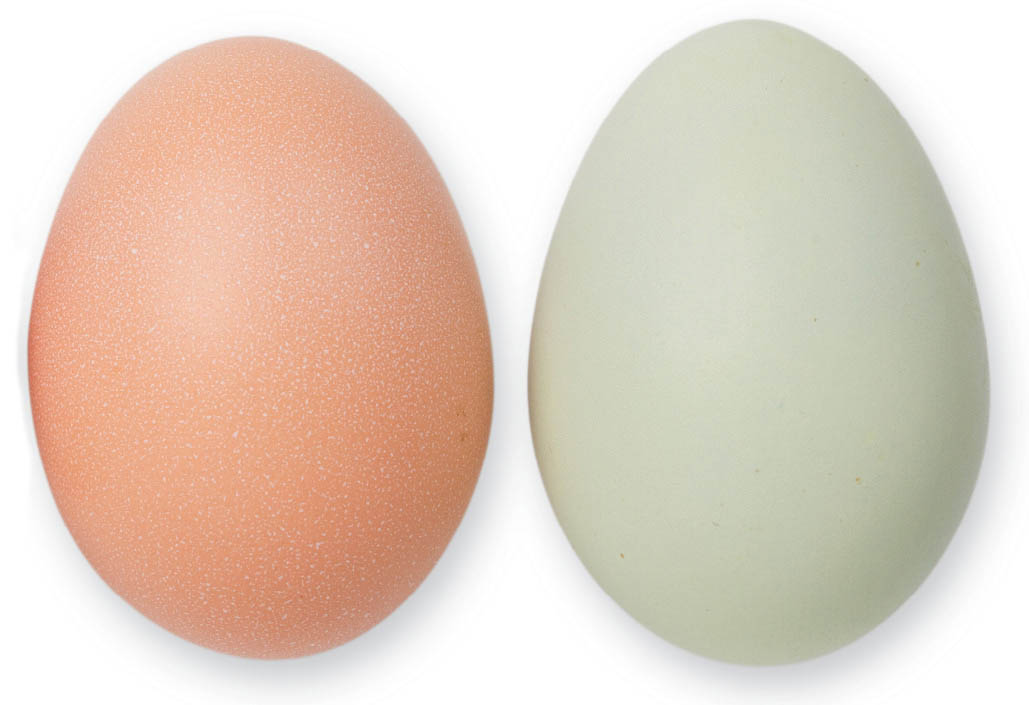
The color and size of the egg are basically the same in all chickens of the same breed, but each hen lays a specific size, tint, and shape that are the same during her entire life. We can tell which chicken has laid which egg. This observation comes in handy because you can tell when certain chickens are not laying eggs and you can investigate the reason why.

Our dear Silkie, Dolly, is usually bald. Whenever she goes broody, which is about every three weeks, the other hens peck at her head to tell her to leave the favorite nesting box, but she stays put, even if they peck her head clean of feathers! This has happened so many times that I don’t think her fluffy topknot will ever return normally. She’ll probably always look a bit silly.
But Dolly is beautiful in so many other ways. She is one of the sweetest and gentlest chickens ever. She loves to sit in our laps, being petted and talked to. We often hear her clucking and cooing, as though communicating to newly hatched chicks. She is friendly to all her flock mates, and will join another broody hen in the nesting box even when she is not broody herself!
People prize birds for their plumage, but the color or appearance of their feathers does not matter to the chickens themselves. It doesn’t matter if they have no head feathers, are walking around with a messy bottom, or have mites or poultry lice. They are still a flock, and at night they can be found nestled closely on the roosts, sleeping side by side.
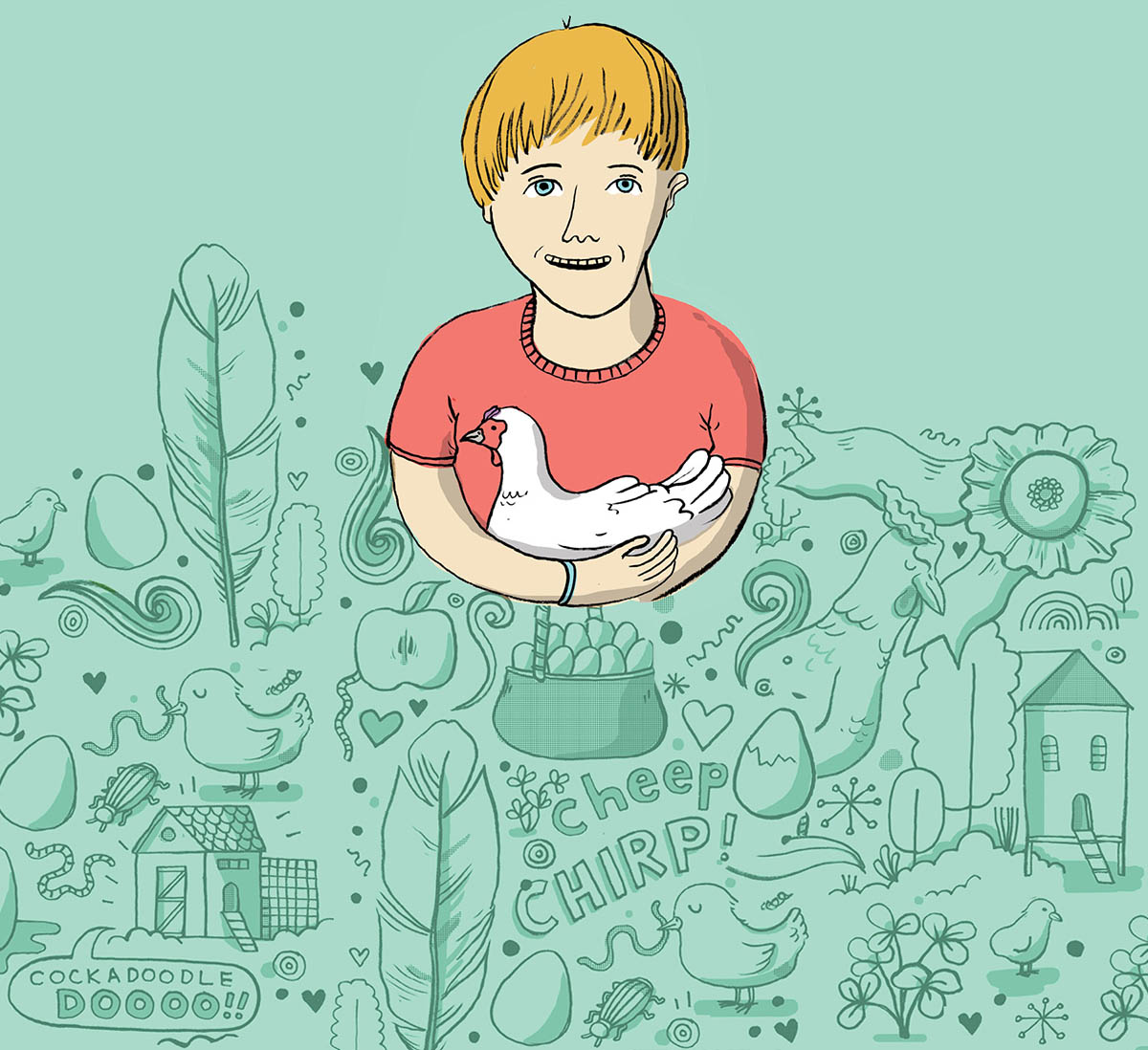
How long have you been keeping chickens?
Seven years.
What do you love about keeping chickens?
The enjoyment of having birds around — I love birds. I love the personalities of the different breeds.
Do you have a favorite breed and why?
I can’t really choose a favorite — I love them equally for different reasons. The Cochins are so affectionate and funny. The Polish have unique personalities, and they have different clucks and sounds for communication. The d’Anvers are small and easy to handle but have big personalities.
What is your favorite thing about chickens?
I like to watch them digging and scratching and just being birds. That’s when you can see their personalities come out. Our Cochins come running up to us looking for treats — it’s fun watching those little fluff balls running.
Do you have any advice for other kids just getting started?
Go to poultry shows to look at all the different breeds and varieties. Talk to the judges and breeders to see what type will fit with your goals the best.
Combs help chickens regulate their body temperature. Cold-hardy breeds tend to have smaller combs, which are less vulnerable to frostbite. Heat-hardy birds usually have larger combs that can release more heat. Chickens also recognize one another by their combs.
Here are some common comb shapes and breeds that have them (turn the page to learn more about these breeds).
Single: Australorp, Barred Rock, Buff Orpington, Cochin, Faverolle
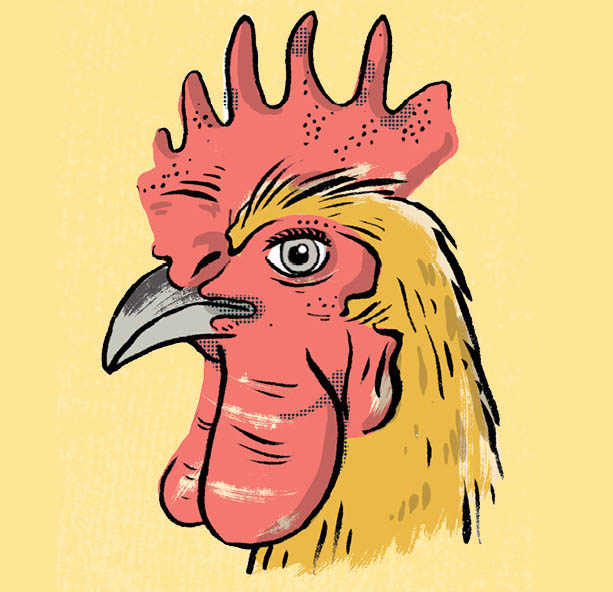
Pea Comb: Brahma, Easter Egger

V-Shape: Polish

Walnut: Silkie Bantam

Rose: Wyandotte

Of course, we are all drawn to the particular look of one breed or another. Some of these birds are really beautiful! Some have poufy topknots; others have feathers streaked with an array of colors. Some have yellow feet, some have black feet, and some have feathered feet. Their combs and wattles (those fleshy appendages on their heads and under their beaks) come in all sizes and shapes.
You can choose a flock of chickens that all look alike, or you can have fun picking out different breeds to make up your flock — it’s up to you!

To be a purebred, a chicken has to have two parents of the exact same breed. With mixed breeds, two different breeds are used to form a different type of chicken with certain characteristics. For example, Ameraucanas are crossed with other breeds to produce Easter Eggers, which lay multicolored eggs. Mixed-breed chickens are sometimes called barnyard mutts.
Chickens come in a couple of different sizes. Standard chickens grow to about the size of a large house cat and weigh anywhere from 7 to 10 pounds when fully grown. They can be an armful to pick up. Bantam chickens are smaller, about the size of a small bunny or guinea pig, and weigh 3 to 5 pounds. They are easier to handle, making them perfect for smaller children. Our Silkie Bantams are so lovable and easy to handle that we always let first-time chicken holders carry one of them around first.

You can mix bantams with standard-sized hens, and you can also mix the breeds. This Silkie Bantam and Buff Orpington live happily with other hens of various breeds.
Of course, smaller hens do lay smaller eggs! Two bantam eggs equal one standard egg.

My kids love to fry up bantam eggs for breakfast . . .

. . . because it’s more fun to have two eggs on toast than one.
If you are looking for very big birds, then check out the Jersey Giants. They are some of the largest chickens available in the United States. The hens grow to more than 10 pounds and the roosters are usually more than 13 pounds!
Here are the 10 chicken breeds that we have found work well for families and tend to be the most docile, friendliest birds. By no means does this list include all the possible breeds: There are hundreds of different ones out there! You can always do more research to find out about breeds that aren’t included here.

Silkies are unusual in several ways. One is having blue earlobes!




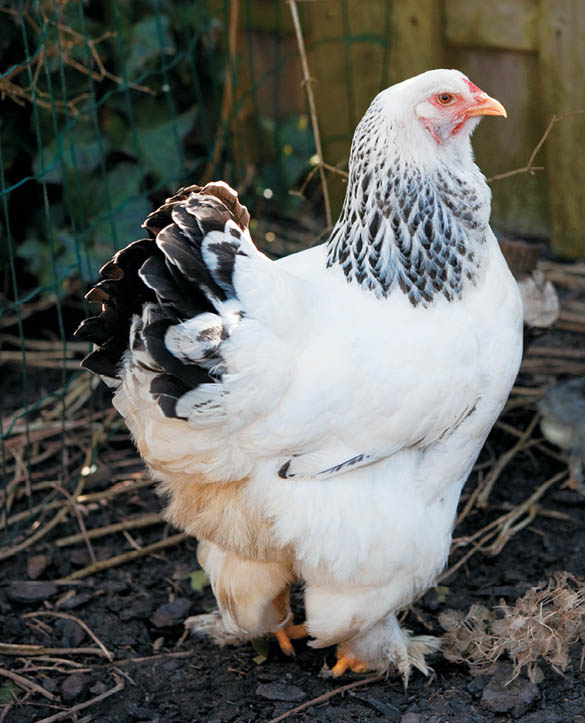
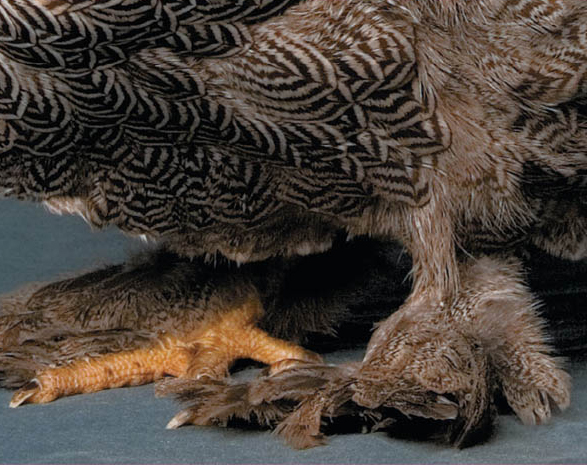



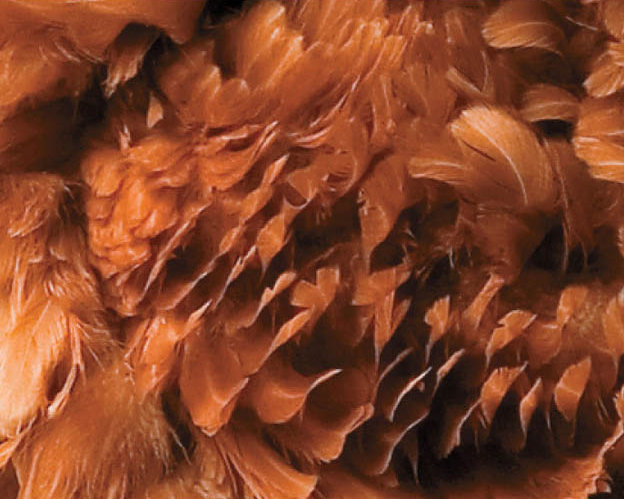

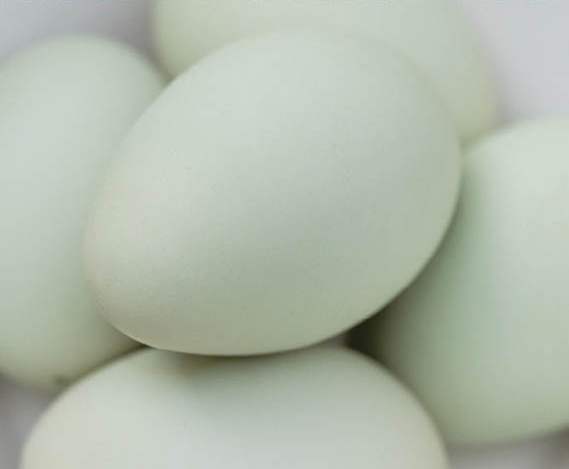



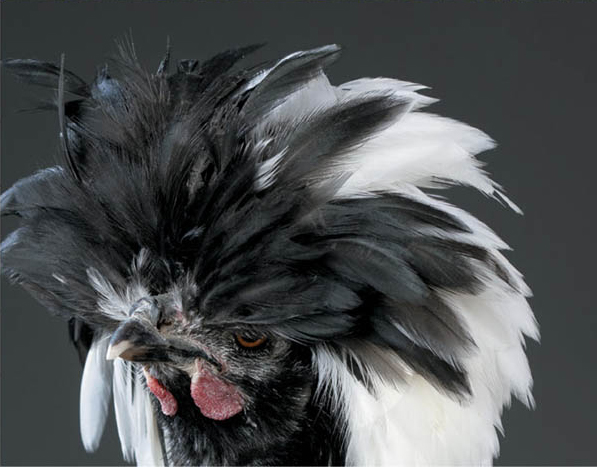
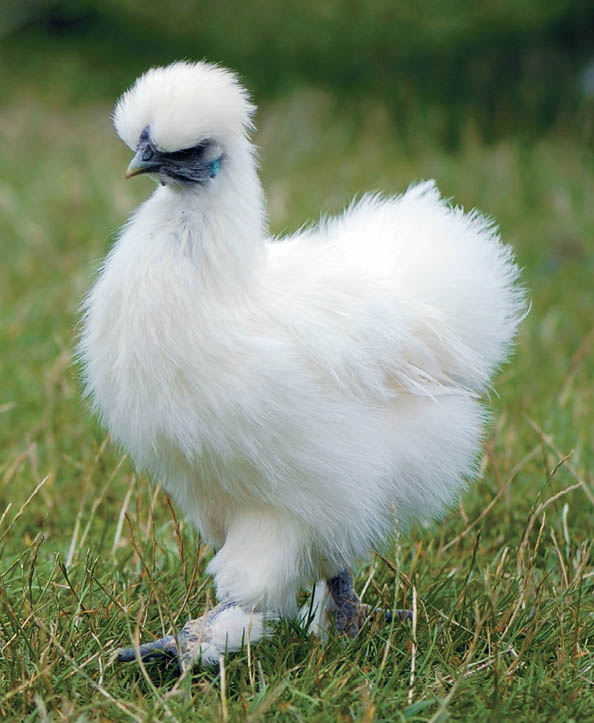
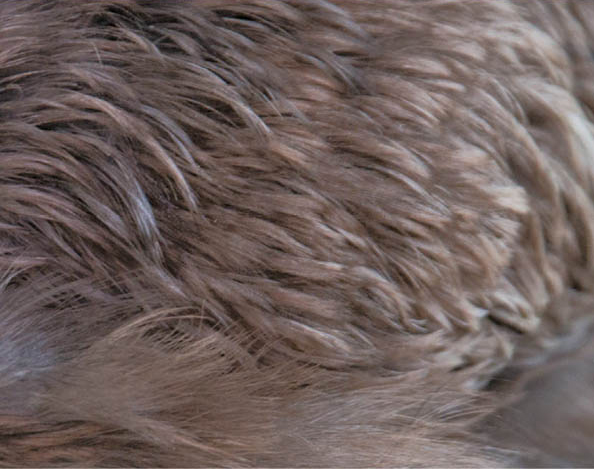


Rhode Island Reds are a very popular breed. They are wonderful egg layers and are incredibly hardy. They can also be docile and calm.
However, some people find that this breed can be aggressive toward other chickens. A harmonious henhouse is important, which is why Rhode Island Reds do not make this Top 10 list.
This doesn’t mean that you shouldn’t consider them, though. They might be just what you’re looking for!
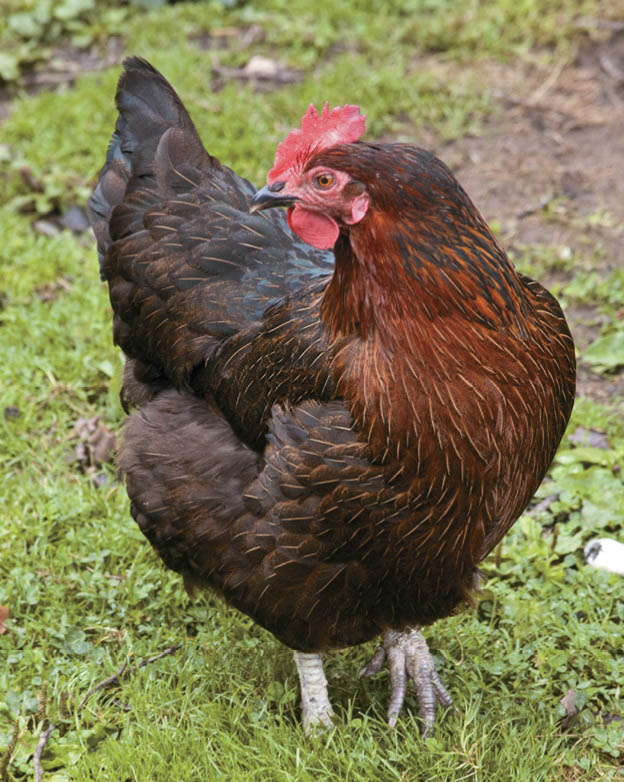
Can you guess which state claims this breed as its official state bird?
As you learn about chicken keeping, you will surely read that keeping roosters (male chickens) stirs up controversy. Roosters can’t lay eggs, but they do serve three purposes: they protect the flock, help keep order among the hens, and fertilize eggs to make chicks.
It is not necessary to keep a rooster with a flock of hens, however. Hens are perfectly capable of defending themselves and sorting out their relationships, and they will lay eggs just fine on their own. But if you want your hens to hatch out their own chicks, you will need a rooster, and some people enjoy having them around.
Roosters are fun to watch. They show off for their girls with a dance in which they shuffle their feet and drag their wings on the ground. They share food with the hens by picking up and dropping special treats, a behavior called tidbitting. They are also quite brave; a rooster who notices danger will herd the flock to safety and then come out to face the predator. He might even sacrifice his life for his hens.


You do not need a rooster to have your hens lay eggs, but you do need a rooster to have the eggs hatch.
Because they are so protective, however, they can be aggressive. When a rooster perceives danger or competition for his girls, he may chase, peck, and dig his spurs into whomever he interprets as a threat, and that can include you, your friends, and your pets. If you have more than one rooster, each should have at least seven hens of his own to protect; with fewer hens available, roosters will fight with each other and may try to mate too often with the hens.
Some people end up with roosters accidentally, either from hatching their own chicks or from a mistake at the hatchery. The hatch rate is exactly the same for males and females, 50 percent. If you decide to hatch or incubate your own eggs, approximately half of them will be males and grow up to be roosters. Have a plan for what to do with those extra roosters.
My kids love making marshmallow-rice treats on rainy weekends. One day they asked if we could make them for the chickens and this recipe was born. Try placing one of these treats into an outdoor bird suet feeder.
